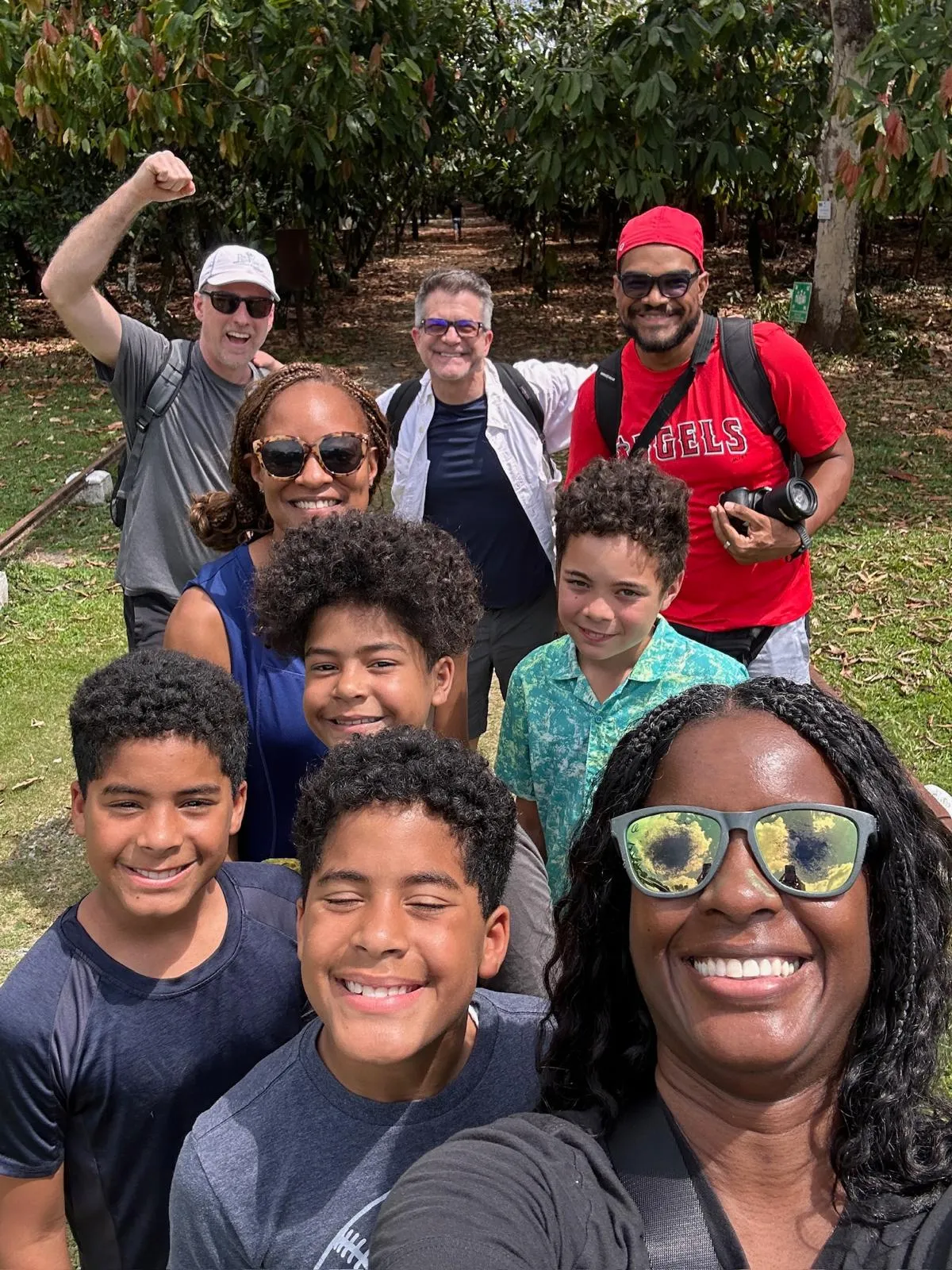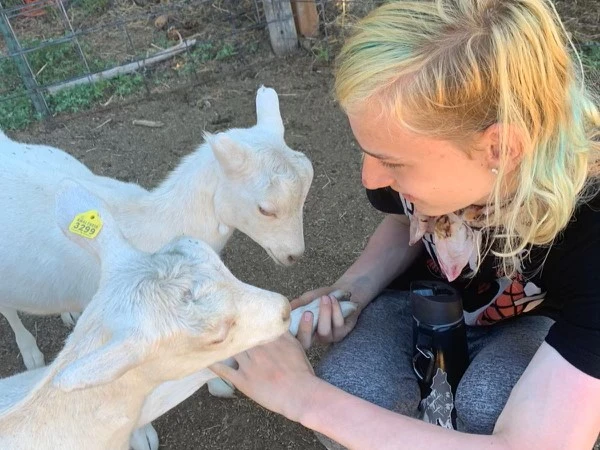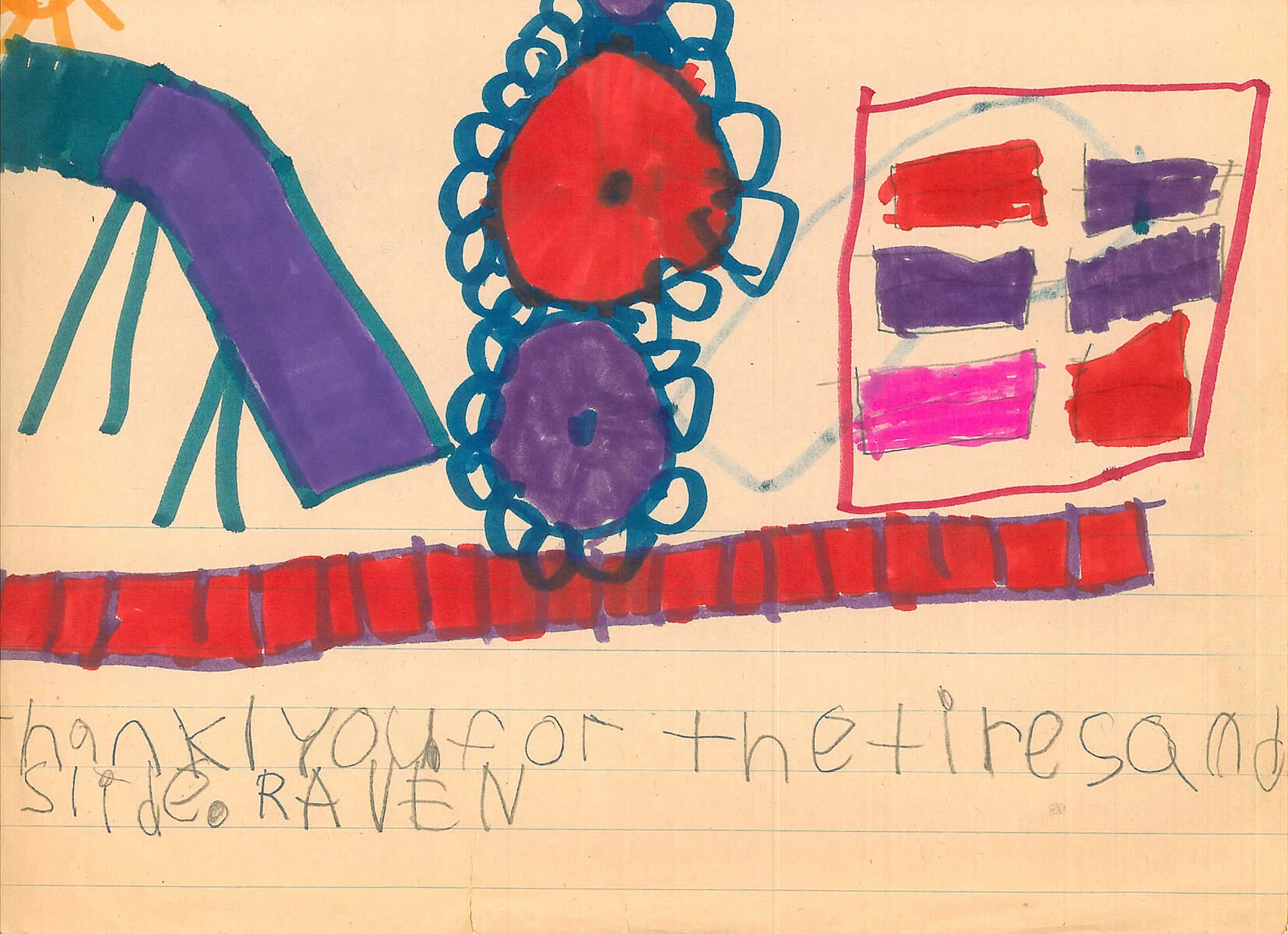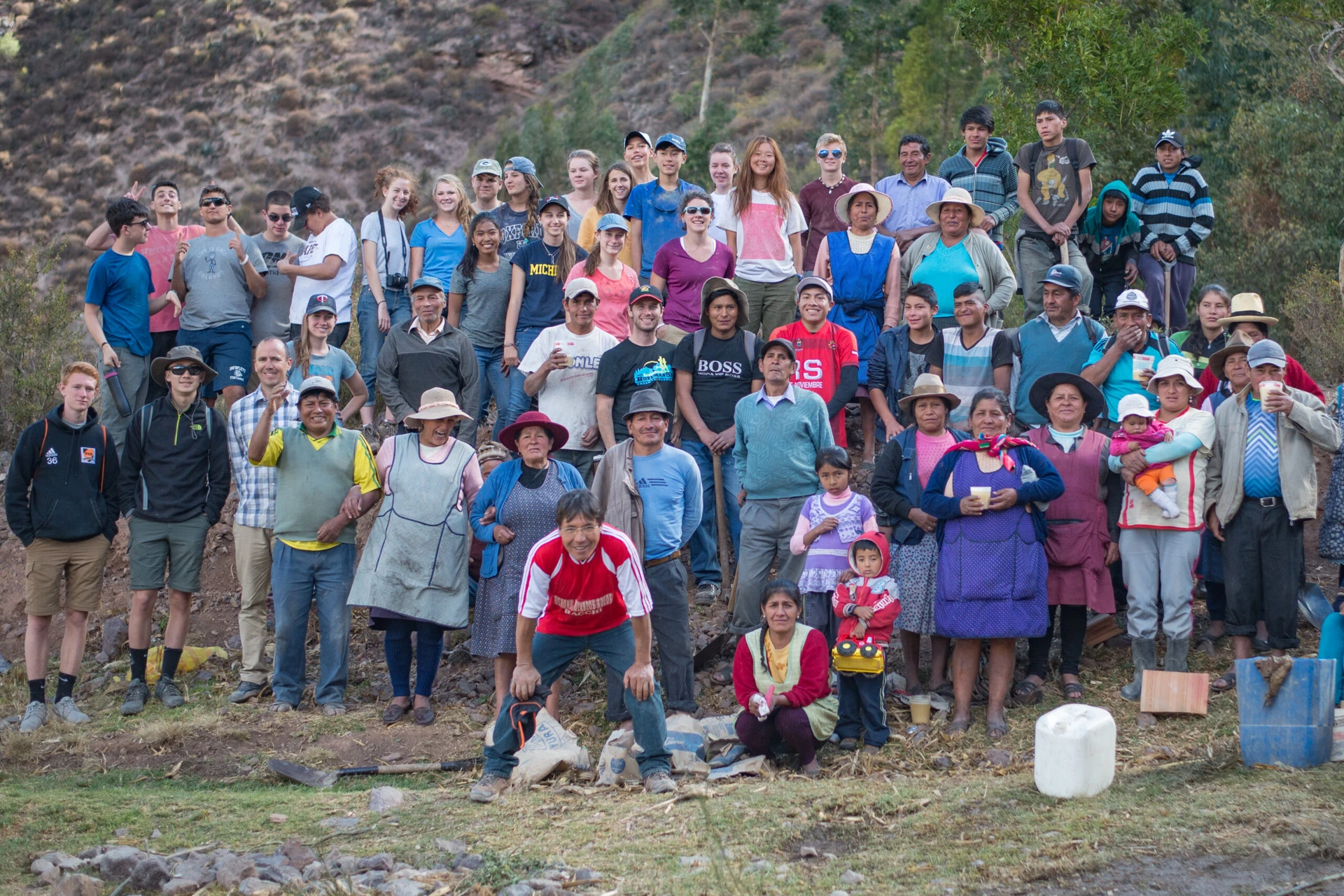By Marsha Whitfield
Girls everywhere are trading in trips to amusement parks and summer camps for a chance to work their tails off for a payoff that will last a lifetime.
This is what Rachel Perschetz took last year on her summer vacation: one pair of work gloves, two pairs of grubby pants, one pair of waterproof pants, one pair of well broken-in work boots and one hammer. And this is what she brought home: carpentry skills she never dreamed she’d have, a feeling of overwhelming accomplishment, warm memories of helping others and many new friendships she hopes will last a lifetime. All this she gained by becoming a volunteer.
A brand new vision
VISIONS, the organization Rachel joined, is a 10-year-old program based in Newport, PA. The goal of VISIONS is to help give young people opportunities for meaningful cross-cultural service.
They have program sites in native Alaskan villages, on Indian reservations in Montana, and even in the Dominican Republic, Guadeloupe and some Caribbean islands.
Rachel, now 16, is the first to say she had no idea what type of work she’d be doing. She just knew that “instead of sitting around,” she wanted to do something active over the summer.
She certainly had no inkling she and her group—17 girls and boys from around the United States—would be demolishing and rebuilding a decrepit old house on heirslands (property passed down from slave times) just outside of Charleston, S.C. The house, being rebuilt for local elderly couple James and Mary, would take four weeks to complete.
Nor did she know she’d be helping to fix another resident’s house by repairing her battered screened porch and watershed, patching the roof, building new back steps, and scraping and painting the house. Rachel also tutored 7- to 9-year-olds in reading and math skills, and worked in a day-care program for 3- to 5-year-old Hispanic migrant children. As she’ll tell you, every day was a little different, some filled with digging and caulking, others with tying shoelaces and pouring Kool-Aid.
“The counselors really tried to get us to try new things every day,” says Rachel. “Sometimes, when we had really difficult jobs to do, like digging ditches for the concrete footings, we would switch shifts every hour so everybody would do their fair share of work. It was pretty frustrating at first, a lot more strenuous than we thought it would be. But after three or four days, we kind of got used to it.”
Since the physical demands could get pretty intense, the group either worked every other day or worked two days and took one off. And thanks to the brutal South Carolina heat, with temperatures reaching nearly 100 degrees, they sometimes arose at 5:30 a.m., left for the site by 7 a.m., and then knocked off around 2 p.m. Some mornings, Rachel says, they would leave even earlier to pick up groceries for lunch or lumber for the day’s projects.
As for living conditions, bare minimum is definitely an understatement. The group spent their summer living in a church community center, where their rooms (one for the boys and one for the girls) consisted of sleeping bags on air mattresses and cubbyholes made from milk crates.
Everyone took turns preparing meals, cleaning up the bathrooms, washing the vans and handling other duties. Explains Rachel, “At first, the girls stuck together and did more of the cooking and cleaning, and the boys did the heavy stuff. Each group kept to themselves. But in a program like this, you can’t stay shy for long. After a week we were all one group. At night, we would get together and share our experiences, iron out differences and build trust by talking about all of the hurdles we’d accomplished that day.” No surprise that by 10 p.m., everybody passed out from sheer exhaustion.
Why live like this?
Who in their right mind, you might ask, would give up a summer of hanging out or earning extra cash to do all this grueling work for free? Lots of girls, it turns out. In growing numbers, kids around the country are trading in trips to family resorts, theme parks and sleepover camps for a chance to work their tails to the bone doing serious labor. These girls will tell you that they simply wanted to get more out of their summer than day camp memories and extra babysitting bucks.
As for Rachel—and all her new friends—they assure us the experience was worth every bead of sweat they shed. In fact, here’s what Rachel wrote the following fall when her English teacher asked her to write an essay about the best 15 minutes of her summer:
When we all arrived at Johns Island off of the coast of South Carolina with the task ‘to build a house,’ we all had our doubts. ‘We’ was a group of l7 kids with no knowledge of building, and the idea of doing this in three weeks seemed impossible.
But once the existing house had been demolished, we half-heartedly set to work, not yet believers in the creation of this house. But when, by the middle of week one, there was a foundation and a floor, we began to gain hope.
After a morning of working at a local Head Start center, three friends and I returned to the site to find two walls, built by the rest of the group, lying flat. They were ready to lift. After lunch we set ourselves up along the walls and got ready. “One. Two. Three. LIFT.” The shock and satisfaction of seeing this once-theoretical house take form was incredible. Our excitement was sent through the not-yet-existent roof, though, when James and Mary, the elderly couple who were to live in the new house, came out to see what we had done. We already felt great, but to see their faces looking at their soon-to-be new house made it a truly memorable occasion”
Reaping the rewards
According to Rachel, the group did plenty of fun stuff to balance out all the hard work. They swam at the beach, kayaked, took a tour of Charleston and went to a baseball game. Still, she says, the real fun was discovering new things and constantly testing their abilities.
“For some kids, it definitely felt like hard work,” says Rachel, “but that’s because, at first, the work just seemed repetitive, like sawing and hammering. We couldn’t see the big picture—that we were actually building a bedroom wall for James and Mary, or back steps for James’ aunt, Ida, whose house was next door. My friends Alex, Lis and I really got into the porch project. Other small projects, like rebuilding the shed, were fun because we had a tangible goal and could really see our work. And everybody really got into the power washers—that was really fun!”
What made it extra cool, Rachel says, was seeing so much generosity throughout the summer. “Steve, the contractor who was helping us, got some of his clients to donate a refrigerator, and he brought us surplus supplies from his other projects,” she says. “And neighbors of the church where we were staying had us over to swim after a particularly hot day at the site. Having everybody involved really made it feel like a community effort.”
Friendships, Rachel says, are built quickly since everybody is sharing the same experiences. No matter how different from one another the kids in the group may be, they still become close because of their united commitment to making a difference. “Most of the kids were not like me at all” says Rachel. “There were cheerleaders, artists, Deadheads [kids who like the band the Grateful Dead], jocks. But the fact that we all signed up for the same program meant we had a lot in common.” Since her trip, Rachel has visited with five of her new pals, checked in with two counselors, and her e-mail is always full.
And friendships definitely extend beyond the group. Some of the tightest bonds of all occurred between the VISIONS teens and the community members they helped. For instance, what started for the teenagers as a working relationship with James, Mary and Ida quickly grew into a solid friendship.
Says Rachel, “Ida told us one of her favorite meals was okra, and none of us had ever had it, so the next day she came back from her job at a neighboring farm with a basket of okra she had picked for us. She taught us that you should pick it in the morning, when it still has dew on it, so it doesn’t prick you, and told us how to cook it. She also brought us a yellow watermelon, which is sooo much better than red. And James brought us tomatoes that he had picked.”
Saying goodbye to their new friends when the project was over, Rachel says, was definitely emotional for the whole group: “We went to see them the last night and brought some presents we had picked out. We all kept stalling because we didn’t want to leave.”
For Ida’s new porch, the kids bought a hanging plant and a welcome mat showing a woman picking sunflowers, just like those in the garden of which Ida was so proud. For James and Mary’s first indoor bathroom, there was a set of navy blue bath towels. And for James’ much-loved bike, with its colorful decorations and newspaper-wrapped seat, there was a pinwheel and a squishy new cushioned seat for his long ride to work.
Afraid that she wouldn’t get home from work in time to say goodbye, Ida left a note on her new porch door: “Dear Group Members, Thank you for the good times you gave me. Thank you for the happy smiles that you shared with me and the warm feelings from your hearts. There will never be another group like all of you. You are the best and greatest people I ever met. There are so many other things I would like to say, but I really don’t have the time. I love all of you. Have a safe trip back home.”
Another meaningful note—this one from the nuns whose outreach center helped to arrange the projects—was given to them as well. On it was a quote from anthropologist Margaret Mead: “Never doubt that a small group of thoughtful, committed citizens can change the world; indeed, it’s the only thing that ever has.”






